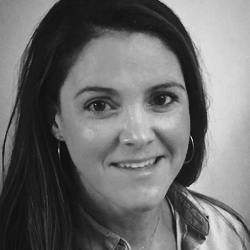Lack of demand stalls SAF progress in Africa
While sustainable aviation fuel (SAF) is now widely recognised as being key to decarbonising aviation in the near and long term, Africa is trailing behind in the greener vapour trails of its global counterparts when it comes to accessing SAF and its benefits.

Farai Chireshe: “While there’s been some progress with SAF refuellings elsewhere in the world, there’s been nothing on a commercial scale on the African continent since 2016.” Picture: Farai Chireshe.
Produced from renewable feedstocks and residue raw materials including used cooking oil, solid waste from homes and businesses, and food scraps that would otherwise go into landfill or incineration, SAF gives a reduction of up to 80% in carbon emissions over its lifecycle compared to the fossil fuel it replaces.
Blended at up to 50% with fossil jet fuel, it is re-certified as Jet A or Jet A-1 and can be dropped or pumped straight into turbine engine aircraft fuel tanks.
With aviation considered a hard-to-abate sector, SAF has an immediate impact on reducing carbon emissions.
In 2016, a South African Airways and Mango Airlines flight between Johannesburg and Cape Town marked a milestone for Africa’s aviation sector, when it became the first on the continent to refuel with SAF. The flight used a domestically grown feedstock from the Limpopo region of South Africa as part of project solaris, which was supported by local feedstock developer, SunChem SA, and fuel supplier, SkyNRG.
However, since then Africa’s SAF journey has stalled.
Farai Chireshe, energy analyst and project officer at WWF South Africa, which was also engaged in the 2016 refuelling, explained: “While there’s been some progress with SAF refuelling elsewhere in the world, there’s been nothing on a commercial scale on the African continent since 2016. There are multiple reasons for this. But, ultimately, the lack of supply comes down to a lack of demand, which is driven by the higher cost and a lack of understanding or awareness of SAF and its benefits.”
Key to shifting that drive in supply and demand will be government policies and SAF mandates. “In Europe and the US, where mandates and incentives are being introduced, they are having an impact on production and uptake. But, to date, there aren’t any African countries that have adopted such policies,” noted Chireshe.
Recognising that a domestic SAF industry could be a pillar of Africa’s low-carbon economy, play a key role in the country’s energy transition, and represent an important export opportunity, WWF launched its waste-to-wing project in collaboration with fuel supplier, SkyNRG, and enterprise development specialist, Fetola, in 2018.
A first of its kind in the country, the project set out to determine the feasibility of using waste biomass to produce SAF in South Africa. Some 25 small and medium sized enterprises trialled the development and supply of SAF feedstocks, as well as demonstrating how to pre-treat them before converting to SAF.
A blueprint produced from the project revealed that South Africa has the immediate technical potential to produce 3.2 billion litres of SAF annually. “Introducing green hydrogen into the SAF manufacturing process could extend this potential to 4.5 billion litres per year,” Chireshe added.
“While our analysis showed that the technical potential for purposely grown crops in South Africa is sizeable, only a fraction of those will be economical to produce. There is a clear need to better understand a more diversified feedstock base, including non-cultivated feedstocks (such as solaris and A-molasses) that will become increasingly relevant with the growing adverse effects of climate change on agricultural output,” he continued.
Invasive alien plants (IAPs) – water-thirsty trees and plants such as eucalyptus and pine trees that have a negative impact on biodiversity – were also found to be of particular interest as a potential feedstock. They are thought to cover more than 10% of South Africa’s land mass and use up to 6% of the country’s fresh water.
“The removal of some of these IAPs, which grow rapidly, is already mandated within some South African regions, but often this biomass source is underutilised. Linking these plants to SAF production represents a significant opportunity,” said Chireshe.
Production infrastructure is another challenge that must be addressed if the continent is to leverage its potential for SAF production. There are currently no SAF production plants on the continent.
“The obvious solution here is to use existing refineries that could be repurposed for SAF production,” said Chireshe. Local fuel producer, Sasol, is currently exploring the logistics of this with two of its existing refineries.
The challenge with SAF production and supply is not unique to Africa, claims business aviation services provider Jet Aviation’s president, David Paddock. “Ultimately, on a global scale, we need more companies, industries and governments to come together and match current future requirements to ensure all relevant infrastructure can be provided and turn SAF into a global reality,” he said.
“There is no one quick solution to SAF supply challenges but emphasising closer collaboration from multiple stakeholders is one way to start,” he continued.
Neste’s vice president EMEA, renewable aviation, Jonathan Wood, agrees. “The market for SAF is in its early stages of commercialisation and the major challenges are both ramping up production and finding customers willing to pay the extra cost versus fossil fuel for the emission benefits,” he said.
As a producer of SAF with a current production capacity of 100,000 tonnes per annum, Neste plans to increase its production capacity 15-fold (to 1.5 million tonnes). However, with its focus currently on Europe, the Americas and Asia-Pacific regions, Neste has yet to partner with any airports in Africa on SAF supply.
“We did supply EgyptAir with SAF prior to the COP27 climate conference in Sharm El Sheikh and we are working alongside airlines, including Emirates and Etihad, on supplying SAF to carriers in the Middle East,” continued Wood.
One solution that could help boost SAF demand in Africa in the near term is book-and-claim. Jet Aviation has partnered with SkyNRG to ensure that, when SAF is not physically available, any customer who wants to is able to purchase SAF through the supply chain and contribute to sustainable aviation. “We remain committed to providing SAF wherever physically available, but our worldwide book-and-claim service broadens access to it, while avoiding the need to physically transport it,” said Paddock.
Air BP, which currently operates at more than 20 locations in Africa, has, to date, supplied SAF at more than 30 locations (in Europe and North America). It also offers a book-and-claim programme, but only for specific locations, none of which are currently in Africa.
Laura Bowden, Air BP’s global marketing manager, explained it comes back to demand. “To operate book-and-claim in a country there has to be demand because there is an investment in time, logistics and legal procedures to do so,” she said.
To scale up demand for SAF, either through book-and-claim or a physical supply, “blending mandates, alongside other regulatory measures, including incentives to bridge the gap with conventional jet fuel, will be key to increasing SAF supply and stimulating demand in Africa”, she reiterated.
While blending mandates are welcomed, Air BP is also calling for the implementation of mass balancing centres, from which SAF can be delivered into select air transport hubs, to decrease the regulatory cost burden and simplify logistics, rather than SAF being available at all airports.
“Increasing SAF supply shouldn’t be about how much of the fuel is being delivered into a particular airport or aircraft. Ultimately, it should come down to how much SAF is replacing conventional fossil fuel overall, and ensuring SAF is delivered as efficiently as possible and with minimal carbon emissions,” Bowden concluded.
Stay up to date
Subscribe to the free Times Aerospace newsletter and receive the latest content every week. We'll never share your email address.


